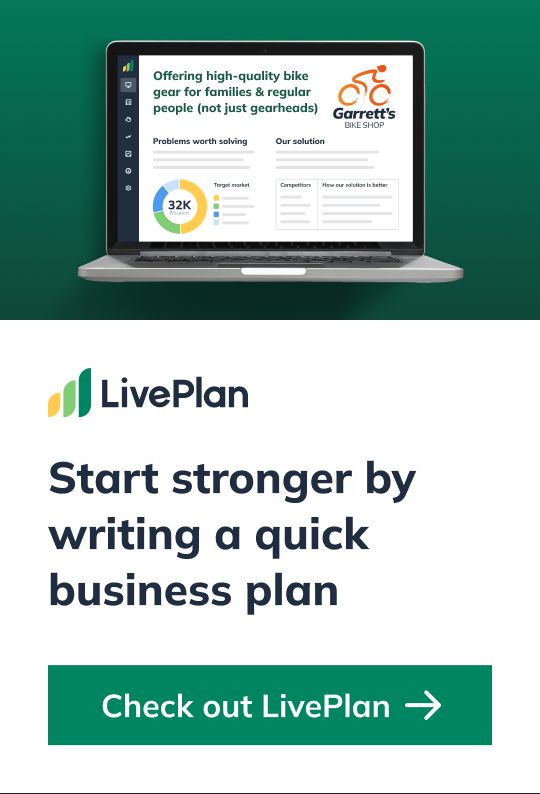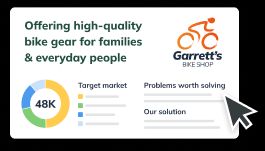What Is a Balance Sheet? Definition, Formulas, and Example

10 min. read
Updated October 27, 2023
Business financial statements consist of three main components: the income statement, statement of cash flows, and balance sheet. The balance sheet is often the most misunderstood of these components—but also extremely beneficial if you understand how to use it.
Check out our free downloadable Balance Sheet Template for more, and keep reading to learn the different elements of a balance sheet, and why they matter.
What is a balance sheet?
The balance sheet provides a snapshot of the overall financial condition of your company at a specific point in time. It lists all of the company’s assets, liabilities, and owner’s equity in one simple document.
A balance sheet always has to balance—hence the name. Assets are on one side of the equation, and liabilities plus owner’s equity are on the other side.
Assets = Liabilities + Equity
What is the purpose of the balance sheet?
Put simply, a balance sheet shows what a company owns (assets), what it owes (liabilities), and how much owners and shareholders have invested (equity).
Including a balance sheet in your business plan is an essential part of your financial forecast, alongside the income statement and cash flow statement.
These statements give anyone looking over the numbers a solid idea of the overall state of the business financially. In the case of the balance sheet in particular, what it’s telling you is whether or not you’re in debt, and how much your assets are worth. This information is critical to managing your business and the creation of a business plan.
Among other things, your balance sheet can be used to determine your company’s net worth. By subtracting liabilities from assets, you can determine your company’s net worth at any given point in time.
Key components of the balance sheet
Typically, a balance sheet is divided into three main parts: Assets, liabilities, and owner’s equity.
Assets
Assets on a balance sheet or typically organized from top to bottom based on how easily the asset can be converted into cash. This is called “liquidity.” The most “liquid” assets are at the top of the list and the least liquid are at the bottom of the list.
Brought to you by
Create a professional business plan
Using AI and step-by-step instructions
Create Your PlanSecure funding
Validate ideas
Build a strategy
Cash
In the context of a balance sheet, cash means the money you currently have on hand. In business planning, the term “cash” represents the bank or checking account balance for the business, also sometimes referred to as “cash and cash equivalents” or “CCE.”
A cash equivalent is an asset that is liquid and can be converted to cash immediately, like a money market account or a treasury bill.
Accounts receivable
Accounts receivable is money people are supposed to pay you, but that you have not actually received yet (hence the “receivables”).
Usually, this money is sales on credit, often from business-to-business (or “B2B”) sales, where your business has invoiced a customer but has not received payment yet.
Inventory
Inventory includes the value of all of the finished goods and ready materials that your business has on hand but hasn’t sold yet.
Current assets
Current assets are those that can be converted to cash within one year or less. Cash, accounts receivable, and inventory are all current assets, and these amounts accumulated are sometimes referenced on a balance sheet as “total current assets.”
Long-term assets
Long-term assets are also referred to as “fixed assets” and include things that will have a long-standing value, such as land or equipment. Long-term assets typically cannot be converted to cash quickly.
Accumulated depreciation
Accumulated depreciation reduces the value of assets over time. For example, if a business purchases a car, the car will lose value as time goes on.
Total long-term assets
Total long-term assets is used to describe long-term assets plus depreciation on a balance sheet.
Liabilities
Like assets, liabilities are ordered by how quickly a business needs to pay them off. Current liabilities are typically due within one year. Long-term liabilities are due at any point after one year.
Accounts payable
Accounts payable is the money that your business owes to other vendors, the other side of the coin to “accounts receivable.” Your accounts payable number is the regular bills that your business is expected to pay.
Pay attention to whether this number is exceedingly high, especially if your business doesn’t have enough to cover it.
Sales taxes payable
This only applies to businesses that don’t pay sales tax right away, for example, a business that pays its sales tax each quarter. That might not be your business, so if it doesn’t apply, skip it.
Short-term debt
This is debt that you have to pay back within a year—usually any short-term loan. This can also be referred to on a balance sheet as a line item called current liabilities or short-term loans. Your related interest expenses don’t go here or anywhere on the balance sheet; those should be included in the income statement.
Total current liabilities
The above numbers added together are considered the current liabilities of a business, meaning that the business is responsible for paying them within one year.
Long-term debt
These are the financial obligations that it takes more than a year to pay back. This is often a hefty number, and it doesn’t include interest. For example, this number reflects long-term loans on things like buildings or expensive pieces of equipment. It should be decreasing over time as the business makes payments and lowers the principal amount of the loan.
Total liabilities
Everything listed above that you have to pay out or back is added together.
Equity
This is the sum of all shareholder money invested in the business and accumulated business profits. Owner’s equity includes common stock, retained earnings, and paid-in-capital.
Paid-in capital
Money is paid into the company as investments. This is not to be confused with the par value or market value of stocks. This is actual money paid into the company as equity investments by owners.
Retained earnings
Earnings (or losses) that have been reinvested into the company, that have not been paid out as dividends to the owners. When retained earnings are negative, the company has accumulated losses. This can also be referred to as “shareholder’s equity.”
This doesn’t apply to all legal structures for a business; if you are a pass-through tax entity, then all profits or losses will be passed on to owners, and your balance sheet should reflect that.
Net earnings
This is an important number—the higher it is, the more profitable your company is. This line item can also be called income or net profit. Earnings are the proverbial “bottom line”: sales less costs of sales and expenses.
Total owner’s equity
Equity means business ownership, also called capital. Equity can be calculated as the difference between assets and liabilities. This can also be referred to as “shareholder’s equity” or “stockholder’s equity.”
Total liabilities and equity
This is the final equation I mentioned at the beginning of this post, assets = liabilities + equity.
How to use the balance sheet
Your balance sheet can provide a wealth of useful information to help improve financial management. For example, you can determine your company’s net worth by subtracting your balance sheet liabilities from your assets, as noted above.
Overall, the balance sheet gives you insights into the health of your business. It’s a snapshot of what you have (assets) and what you owe (liabilities). Keeping tabs on these numbers will help you understand your financial position and if you have enough cash to make further investments in your business.
Perhaps the most useful aspect of your balance sheet is its ability to alert you to upcoming cash shortages. After a highly profitable month or quarter, for example, business owners sometimes get lulled into a sense of financial complacency if they don’t consider the impact of upcoming expenses on their cash flow.
There are two easy-to-figure ratios that can be computed from the balance sheet to help determine whether your company will have sufficient cash flow to meet current financial obligations:
Current ratio
This measures liquidity to show whether your company has enough current (i.e., liquid) assets on hand to pay bills on-time and run operations effectively. It is expressed as the number of times current assets exceeds current liabilities.
The higher the current ratio, the better. A current ratio of 2:1 is generally considered acceptable for inventory-carrying businesses, although industry standards can vary widely. The acceptable current ratio for a retail business, for example, is different from that of a manufacturer.
Current ratio formula
Current Assets / Current Liabilities
Quick ratio
This ratio is similar to the current ratio but excludes inventory. A quick ratio of 1.5:1 is generally desirable for non-inventory-carrying businesses, but—just as with current ratios—desirable quick ratios differ from industry to industry.
Quick ratio formula
Current Assets – Inventory / Current Liabilities
Knowing your industry’s standards is an important part of evaluating your business’s balance sheet effectively.
The limits of the balance sheet
Remember, the balance sheet alone doesn’t give you a complete view of your business finances. You’ll want to keep tabs on your profit & loss statement and cash flow as well.
Your profit & loss statement will show you the sales you are making and your business expenses and calculates your profitability. This is crucial for understanding the core economics of your business and if you’re building a profitable business, or not.
Your cash flow forecast shows how cash is moving in and out of your business and can help you predict your future cash balances. Fast growth can reduce cash quickly, especially for businesses that carry inventory, so this is a crucial statement to pay attention to as well.
The three statements all work together to provide you with a complete picture of your business.
Example of a balance sheet
Large businesses will have longer and more complex balance sheets for their businesses, sometimes having separate balance sheets for different segments or departments of their business. A small business balance sheet will be more straightforward and have fewer line items.
Here is a balance sheet from Apple, for example. You’ll see that it includes a complex stockholder’s equity section and several specifically itemized types of long-term assets and liabilities.

You’ll also notice that it says “Period Ending” at the top; this indicates that these numbers are reflective of the time up until the date listed at the top of the column. This terminology is used when you are reporting actual values, not creating a financial forecast for the future.
Get familiar with your balance sheet
Most companies should update their balance once a month, or whenever lenders ask for an updated balance sheet. Today’s accounting software programs will create your balance sheet for you, but it’s up to you to enter accurate information into the program to generate useful data to work from.
The balance sheet can be an extremely useful financial tool for businesses that understand how to use it properly. If you’re not as familiar with your balance sheet as you’d like to be, now might be a good time to learn more about the workings of your balance sheet and how it can help improve financial management.
Create your balance sheet easily by downloading our Balance Sheet Template, and check out our full guide to write your financial plan.







